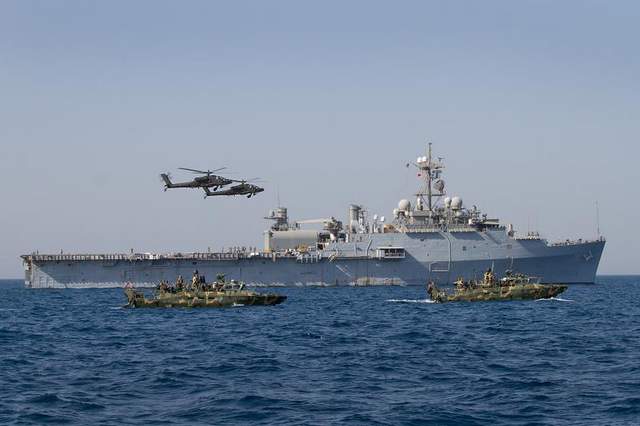
Iran’s seizure of 10 U.S. Navy sailors aboard two small boats as they sailed from Kuwait to Bahrain is the latest in a series of confrontations carried out on the Persian Gulf between the two countries.
“Earlier today, we lost contact with two small U.S. naval craft en route from Kuwait to Bahrain,” Pentagon spokesman Peter Cook said in a statement. “We subsequently have been in communication with Iranian authorities, who have informed us of the safety and well-being of our personnel. We have received assurances the sailors will promptly be allowed to continue their journey.”
The sailors were released on Wednesday by the Iranian Revolutionary Guards who said it was determined that their entry was not intentional.
One of the boats may have had a mechanical problem that caused both to drift within 12 miles of Farsi Island, Iranian territory in the middle of the gulf, defense officials said. Secretary of State John Kerry spoke to Iranian officials by phone and received assurances that the sailors—nine men and one woman, according to an Iranian press report—would soon be released.
The seizure, hours before President Obama delivers his final State of the Union address where he is likely to cite the recently concluded nuclear deal with Iran as a diplomatic success, is only the latest confrontation between Washington and Tehran. It comes two weeks after the Iranians fired several unguided rockets about 1,500 yards from the carrier USS Harry S. Truman and a pair of smaller U.S. and French warships in the Strait of Hormuz. That’s the bottleneck between the Persian Gulf and Arabian Sea through which 17 million barrels of oil, 20% of world demand, flows daily.
There were conflicting reports over whether the sailors were seized by the Iranian coast guard or the Iranian Revolutionary Guard. The Revolutionary Guard is known to maintain a presence on the heavily-guarded three-square mile island. The Revolutionary Guards are sort of the wild card of the Iranian government. They are “generally loyal to Iran’s political hardliners and is clearly more politically influential than is Iran’s regular military,” according to a May report prepared for Congress. Its “political influence has grown sharply as the regime has relied on it to suppress dissent.”
The trouble with any such action is that mistakes by either side could quickly turn violent. The USS Vincennes, erroneously thinking it was under attack, destroyed an Iranian airliner over the strait in 1988, killing all 290 aboard. That came on the heels of skirmishes that led the U.S. Navy to sink six Iranian vessels and the disabling of the USS Samuel B. Roberts by an Iranian mine. In 2007, Iran seized 15 British sailors and detained them for 13 days.
Fathoming Tehran’s motives is always challenging. Iran has bridled under economic sanctions imposed by the U.S. and other nations due to its nuclear ambitions, although both sides struck a deal in October to delay them. Iran has always viewed the Persian Gulf as part of its neighborhood. It likes to flex its muscles there every once in awhile, U.S. Navy officials say.
More Must-Reads From TIME
- The 100 Most Influential People of 2024
- The Revolution of Yulia Navalnaya
- 6 Compliments That Land Every Time
- What's the Deal With the Bitcoin Halving?
- If You're Dating Right Now , You're Brave: Column
- The AI That Could Heal a Divided Internet
- Fallout Is a Brilliant Model for the Future of Video Game Adaptations
- Want Weekly Recs on What to Watch, Read, and More? Sign Up for Worth Your Time
Contact us at letters@time.com